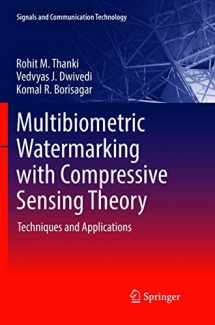
Multibiometric Watermarking with Compressive Sensing Theory: Techniques and Applications (Signals and Communication Technology)
Book details
Summary
Description
This book presents multibiometric watermarking techniques for security of biometric data. This book also covers transform domain multibiometric watermarking techniques and their advantages and limitations. The authors have developed novel watermarking techniques with a combination of Compressive Sensing (CS) theory for the security of biometric data at the system database of the biometric system. The authors show how these techniques offer higher robustness, authenticity, better imperceptibility, increased payload capacity, and secure biometric watermarks. They show how to use the CS theory for the security of biometric watermarks before embedding into the host biometric data. The suggested methods may find potential applications in the security of biometric data at various banking applications, access control of laboratories, nuclear power stations, military base, and airports.


We would LOVE it if you could help us and other readers by reviewing the book
Book review



